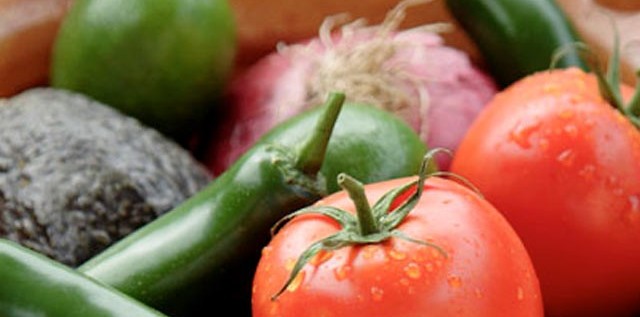How To Protect Yourself From Food Poisoning

 The CDC estimates that roughly 1 in 6 Americans will get sick from food-borne illnesses each year. E. coli outbreaks continue to be a public health problem, both in the States and abroad, especially since our food supply has gone global and we’re able to have fresh produce year-round by importing fruits and veggies. Now, E. coli outbreaks are happening on a never-seen-before scale in Germany with more than 2,500 infections and more than 25 deaths reported since last month. Experts aren’t sure exactly which vegetable triggered the outbreak (though many are pointing to organic sprouts at the moment), or even which country it originated from.
The CDC estimates that roughly 1 in 6 Americans will get sick from food-borne illnesses each year. E. coli outbreaks continue to be a public health problem, both in the States and abroad, especially since our food supply has gone global and we’re able to have fresh produce year-round by importing fruits and veggies. Now, E. coli outbreaks are happening on a never-seen-before scale in Germany with more than 2,500 infections and more than 25 deaths reported since last month. Experts aren’t sure exactly which vegetable triggered the outbreak (though many are pointing to organic sprouts at the moment), or even which country it originated from.
“This particular outbreak shouldn’t affect Americans because it’s rare that perishable produce will make it across the Atlantic, but that doesn’t mean there isn’t risk of an outbreak here in the States,” says Keith R. Schneider, Ph.D, Associate Professor in the Department of Food Safety and Human Nutrition at the University of Florida. Dr. Schneider points out that we’ve had multiple outbreaks in the States, from the salmonella incident linked to Jalapeño peppers in salsa to the E. coli outbreak connected with spinach.
“It’s hard to find the exact source of a food-borne illness because it typically takes two to three days for the first symptoms of an infection to appear, and longer for people to actually visit a doctor. By then, you can’t remember exactly what you ate last Tuesday,” says Dr. Schneider. “Moreover, contamination might not be from a specific farm or food, but from a point of distribution. It might be from one guy named Eddie who isn’t washing his hands while packaging food.”
Still, the health benefits of eating fresh produce far outweigh the risk, says Dr. Schneider. “You’re much more likely to get sick from meat than you are from produce. You can find pathogens on poultry 50 percent of the time. That’s not even a reason for alarm because all it takes is cooking meat fully to completely kill the bacteria.”
The key to avoiding food-borne illnesses is safe handling practices, says Francisco Diez, Ph.D, Professor of Food Safety and Microbiology in the Department of Food Science and Nutrition at the University of Minnesota. “Since poultry is especially likely to have salmonella or another pathogen called campylobacter that normally lives in the intestines of birds, it’s important to cook meat to the proper temperature,” says Dr. Diez.
He recommends using a food thermometer to cook the center of any type of meat or fish to 165 degrees Fahrenheit. “This temperature has sufficient heat to destroy harmful bacteria without overcooking so the meat stays tender and juicy.” Also wash your hands before and after handling meat, and avoid cross contamination by using separate cutting boards and knives for meat and produce.
When it comes to fresh produce, there are certain types that may be more susceptible to pathogens. Here is Dr. Diez’s list of top five at-risk produce, and how to protect yourself from illness.



#IAmNotARapper RT RT How To Protect Yourself From Food Poisoning http://bit.ly/pb8Tfp
IAmNotARapper RT RT How To Protect Yourself From Food Poisoning http://bit.ly/pb8Tfp
#IAmNotARapper RT RT How To Protect Yourself From Food Poisoning http://bit.ly/pb8Tfp